The ability to manage growth, innovation, and cost alongside the ever-growing complexity of regulations can mean the difference between sinking and swimming in life sciences. There’s little, if any, room for failure. As a consequence, regardless of the subvertical – blood and biologics, medical devices, pharmaceutical manufacturing, or biotechnology – one metric that should be on every executive’s quality dashboard is products in compliance (PiC).
Just as it sounds, PiC is measured as a percentage of finished products within compliance. It directly correlates to the effectiveness of internal education programs and SOPs, in addition to shedding light on an organization’s ability to meet local, national, and global compliance. Increases and decreases in PiC performance can be seen impacting other key quality metrics such as new product introductions (NPI), the cost of quality, and on-time and complete shipments.
In many cases a drop in PiC can trigger the need for immediate action. On the other hand, improvements in PiC can indicate that efforts from the shop floor to the top floor are working. Using data from LNS’s 2012-2013 Quality Management Survey, this post will discuss several ways life sciences companies can improve PiC.
Products in Compliance Metric Data by Industry
Before discussing the four areas where organizations can invest to improve the PiC metric, it will be helpful to provide some context as to how life sciences companies compare to others. The data point below shows 2012 PiC performance for life sciences, discrete manufacturing, and batch manufacturing companies.
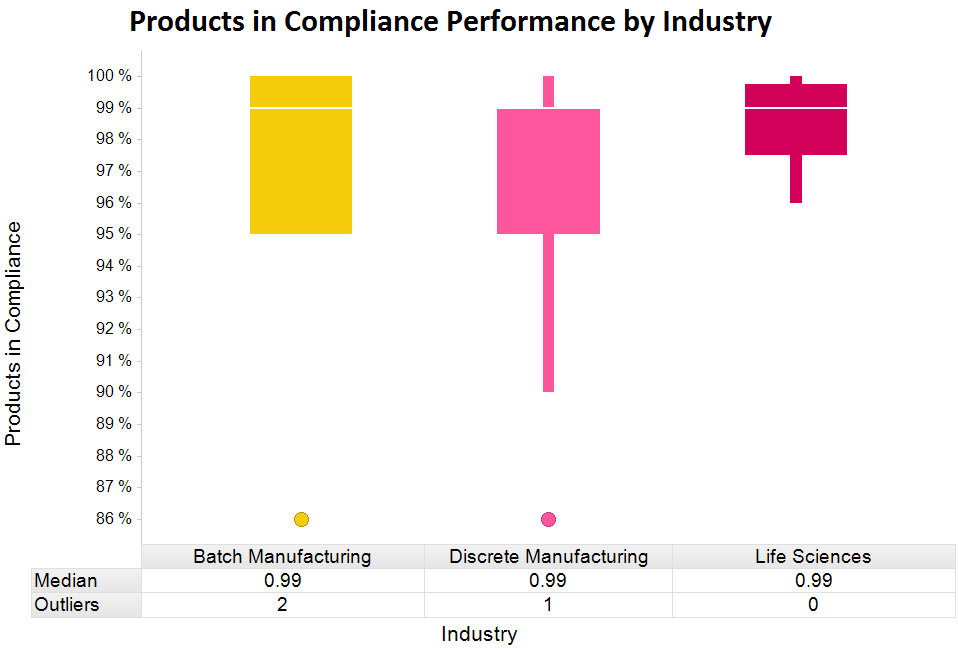
While there is no difference in the median performance between these three buckets of companies, there are considerable variations in the distributions. Most notably, the bottom 50% of batch and discrete manufacturing companies – which can be seen as space below the white line – have a performance range of 95%-99%, whereas the bottom two quartiles for life sciences companies range from 97.5%-99%.
The limited PiC performance variability among life sciences companies is likely due to the maturity of the industry itself when it comes to quality and compliance processes. However, this result also implies that virtually any manufacturing company with product compliance below 99%, especially in life sciences, can and should take steps to improve performance. The risks and costs that non-complying products pose just aren't worth it when we consider the relatively easy steps that can be taken to improve. (Tweet this concept!)
The following section cross-analyzes several variables such as processes or enterprise quality management software (EQMS) functionalities with PiC performance. Using benchmark data from the 2012-2013 Quality Management Survey, we’ve picked out four key areas on which executives can focus to improve PiC.
1. Simplify and Consolidate Compliance Processes across the Enterprise
It’s no surprise that a disconnect in compliance processes can become a major challenge for many large and distributed life sciences companies. By taking the time to consolidate and simplify this often intricate web of documents and procedures, organizations can experience significant improvements in PiC.
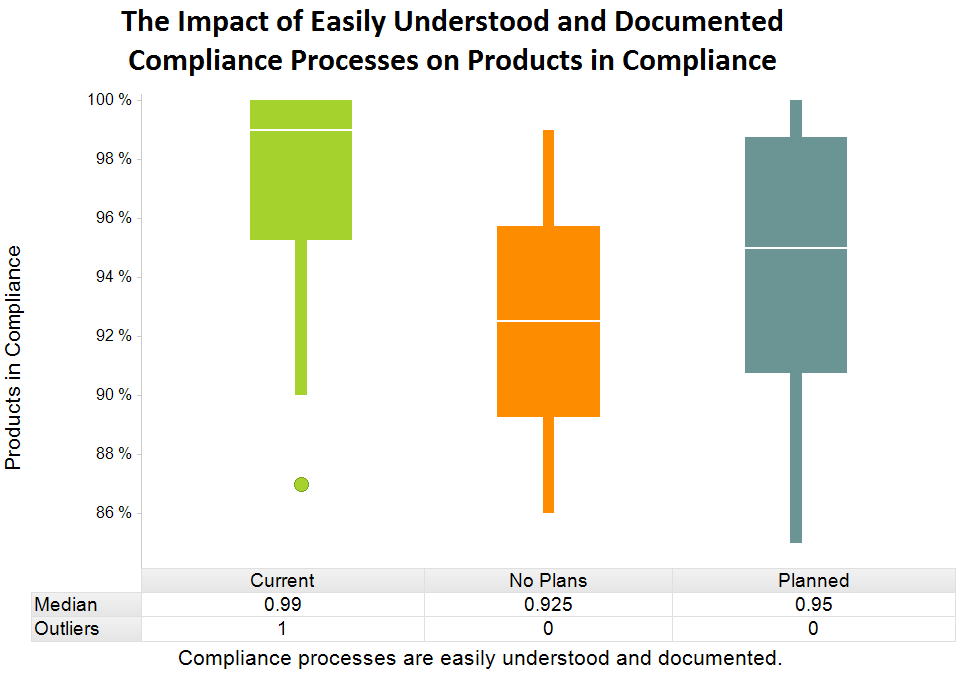
Executives stating that compliance processes were easily understood and documented in 2012 experienced limited variability in PiC and a median PiC of 99%, which was 6.5% higher than those who have not yet undertaken this task. Many of these executives have likely already invested in employee education and training, the standardization of SOPs, and document control capabilities delivered by EQMS.
2. Globally standardize the corrective and preventive action processes
As seen in the box plot below, companies with a formal CAPA process outperformed others in median PiC performance by 2%, with half producing 99% of products within compliance specifications. It’s not uncommon for there to be different methods for investigating, recording, escalating, approving, and communicating the CAPA process within a single organization. When this process is fractured between departments, regions, and so on, it provides minimal global benefits to the PiC metric.
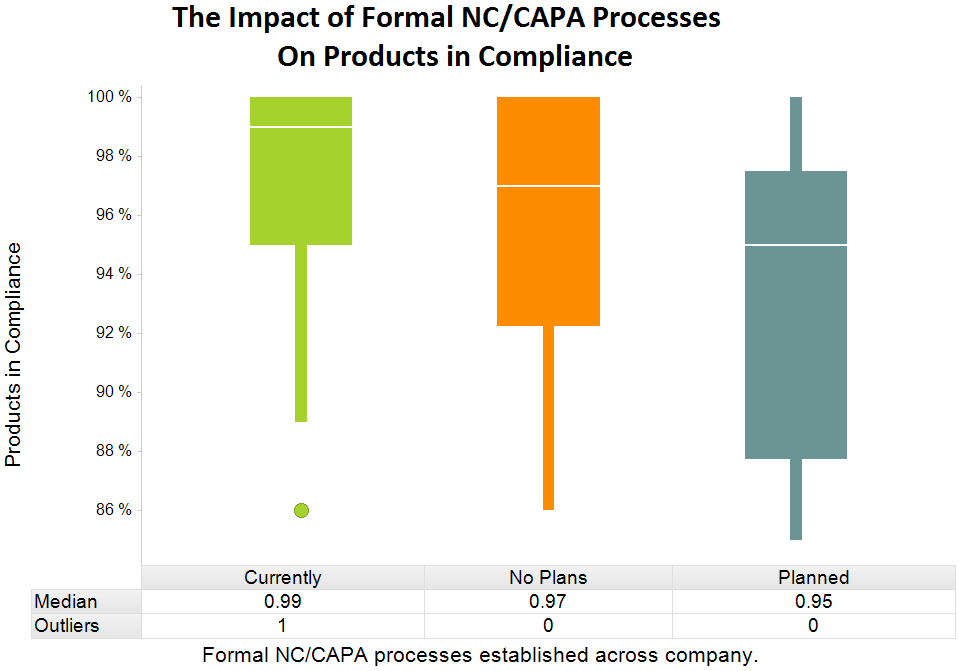
3. Establish a formal and enterprise-wide audit management process
One of the most dramatic differences, companies with a formal audit management process established across the enterprise experienced considerably higher PiC than others (99% compared to 90.5%). Audit management provides the ability for routine and spot investigations into the ability to meet compliance. Similar to CAPA, with EQMS this process can be automated and centralized to identify areas for global improvement.
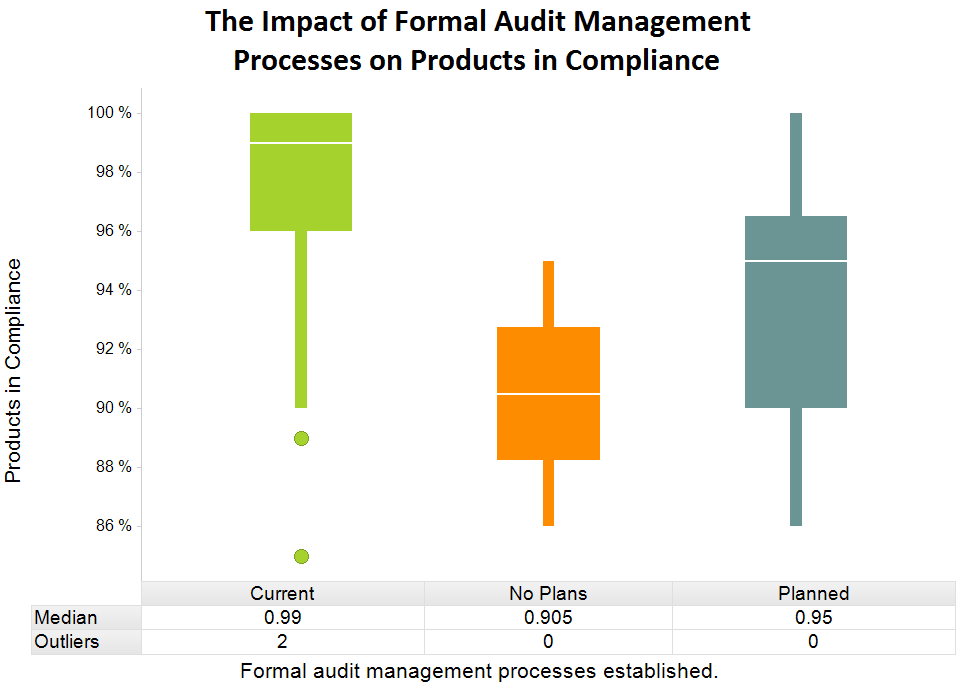
4. Establish closed-loop processes across design, manufacturing, and suppliers
Companies that have closed-loop quality processes outperformed others in PiC performance by 4%, which is significant in the competitive landscape of life sciences. Communication and collaboration across the value chain is imperative for establishing closed-loop processes.
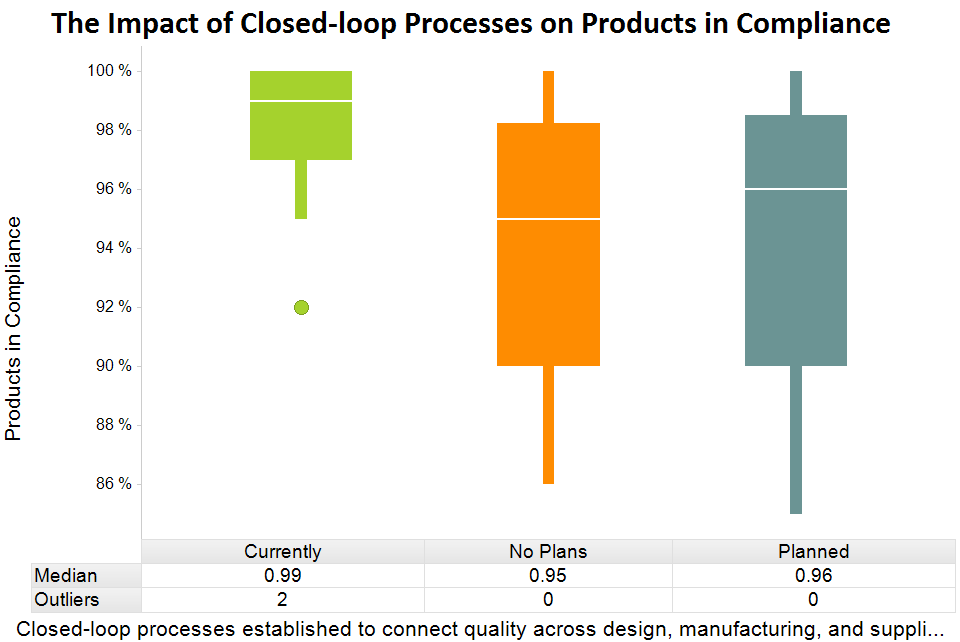
By having a feedback loop that delivers quality process data and content between, for instance, manufacturing and design, the root causes of nonconformances can be more quickly and effectively identified and resolved. The global standardization of CAPA and audit processes as discussed above is instrumental to achieving closed-loop quality in life sciences.
Transforming Quality and Compliance Processes
Although the above results seem clear, the path to move a company from many disparate processes to harmonized global process is not always so simple. It's not uncommon for a company to have as many different CAPA or Audit Management processes as it does manufacturing facilities. Luckily, the quantitative and qualitative research conducted by LNS shows that executive support for quality and compliance, standardized enterprise wide quality systems, and the use of continuous improvement initiatives can dramatically improve a company's chances for success.
To learn more about how to deploy the needed technology, such as EQMS, and cultural transformation read the LNS report Integrating Quality, Risk, and EH&S in the Life Sciences Industry. Please feel free to share your own thoughts on improving PiC performance in the comments section below.
You might also be interested in:
The Missing Link For Managing Quality, Risk, and EH&S in Life Sciences
EtQ Life Sciences Seminar Key Takeaways
Collaboration and EQMS: Quality Strategies for Life Sciences